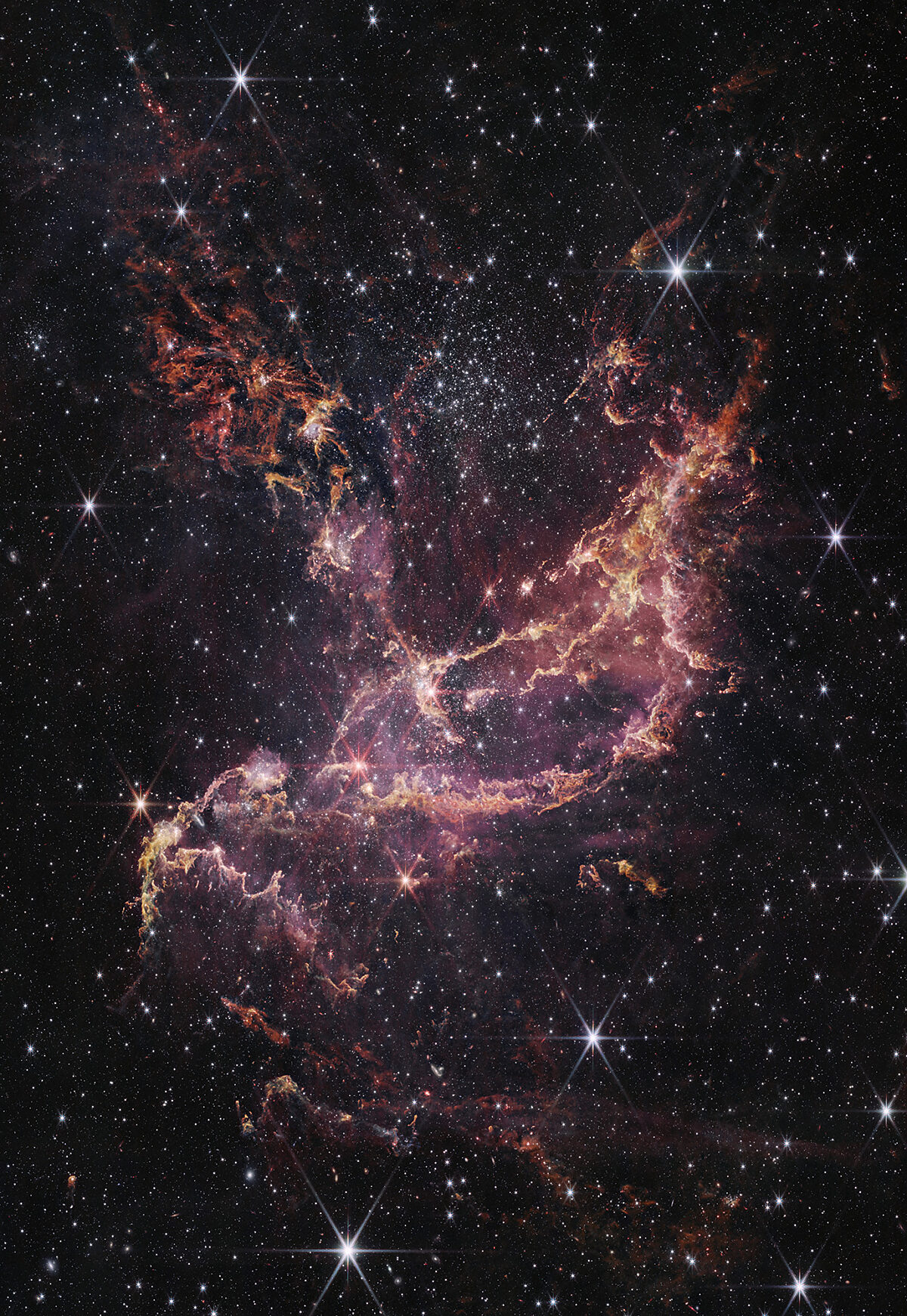Bruce Murray Space Image Library
Star cluster NGC 346 from JWST

From NASA: NGC 346, shown here in this image from NASA’s James Webb Space Telescope Near-Infrared Camera (NIRCam), is a dynamic star cluster that lies within a nebula 200,000 light years away. JWST reveals the presence of many more building blocks than previously expected, not only for stars, but also planets, in the form of clouds packed with dust and hydrogen. The plumes and arcs of gas in this image contains two types of hydrogen. The pink gas represents energized hydrogen, which is typically as hot as around 10,000 °C (approximately 18,000 °F) or more, while the more orange gas represents dense, molecular hydrogen, which is much colder at around -200 °C or less (approximately -300 °F), and associated dust. The colder gas provides an excellent environment for stars to form, and, as they do, they change the environment around them. The effect of this is seen in the various ridges throughout, which are created as the light of these young stars breaks down the dense clouds. The many pillars of glowing gas show the effects of this stellar erosion throughout the region. In this image blue was assigned to the wavelength of 2.0 microns (F200W), green was assigned to 2.77 microns (F277W), orange was assigned to 3.35 microns (F335M), and red was assigned to 4.44 microns (F444W).


 Explore Worlds
Explore Worlds Find Life
Find Life Defend Earth
Defend Earth

